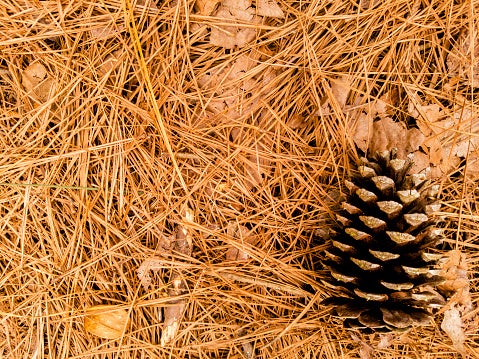| AUBURN UNIVERSITY, Ala. – The name of the game for landowners is to manage their land and its resources in a way that is profitably. For forestland owners, one way to fully utilize the land’s resources is by harvesting pine straw for profit. This can be a great opportunity for landowners to earn additional income, especially when traditional timber markets are down.
Becky Barlow, the Alabama Cooperative Extension System interim assistant director for agriculture, forestry and natural resources, said when pine trees cast their needles, they produce a non-timber forest product called pine straw.
“This annual needle shedding is a natural biological process where older, spent needles fall from the tree to be replaced by new ones,” Barlow said.
Benefits
When layers of straw build up on the forest floor, harvesting and selling it can be a source of income. Landowners can rake and sell freshly fallen pine needles to retailers, landscapers and others who use the straw. A popular use of harvested this straw is for landscape mulch. People normally sell pine straw on a per-acre or per-bale basis.
“Revenue from pine straw harvests can vary based on region, tree species, straw quality and the costs of site preparation and harvesting,” Barlow said.
How to Harvest
According to Barlow, who is also an Alabama Extension specialist and professor of forestry and wildlife sciences, harvesting pine straw can be done mechanical or by hand. Hiring contractors to conduct mechanical harvesting operations with tractor-drawn rakes is popular. This piece of equipment pulls the needles into piles between tree rows. After this, tractor-drawn bailers collect and bundle pine needles into bales bound with wire or twine.
Hand-raking straw is a popular method in forest stands where trees are closer together or where low-impact operations are necessary. A forest stand is a contiguous group of trees that are fairly uniform in age-class distribution, structure and composition. Hand ranks help in gathering between rows of trees.
“Once gathered, straw is then placed in a bailing box, compressed into a square bale and secured with twine,” Barlow said.
More Information
For those interested in learning more about harvesting pine straw, check out the Alabama Extension publication Harvesting Pine Straw for Profit: Questions Landowners Should Ask Themselves. For further information, people can contact the forestry, wildlife and natural resources professional in their area or visit the Alabama Extension website at www.aces.edu.
|






